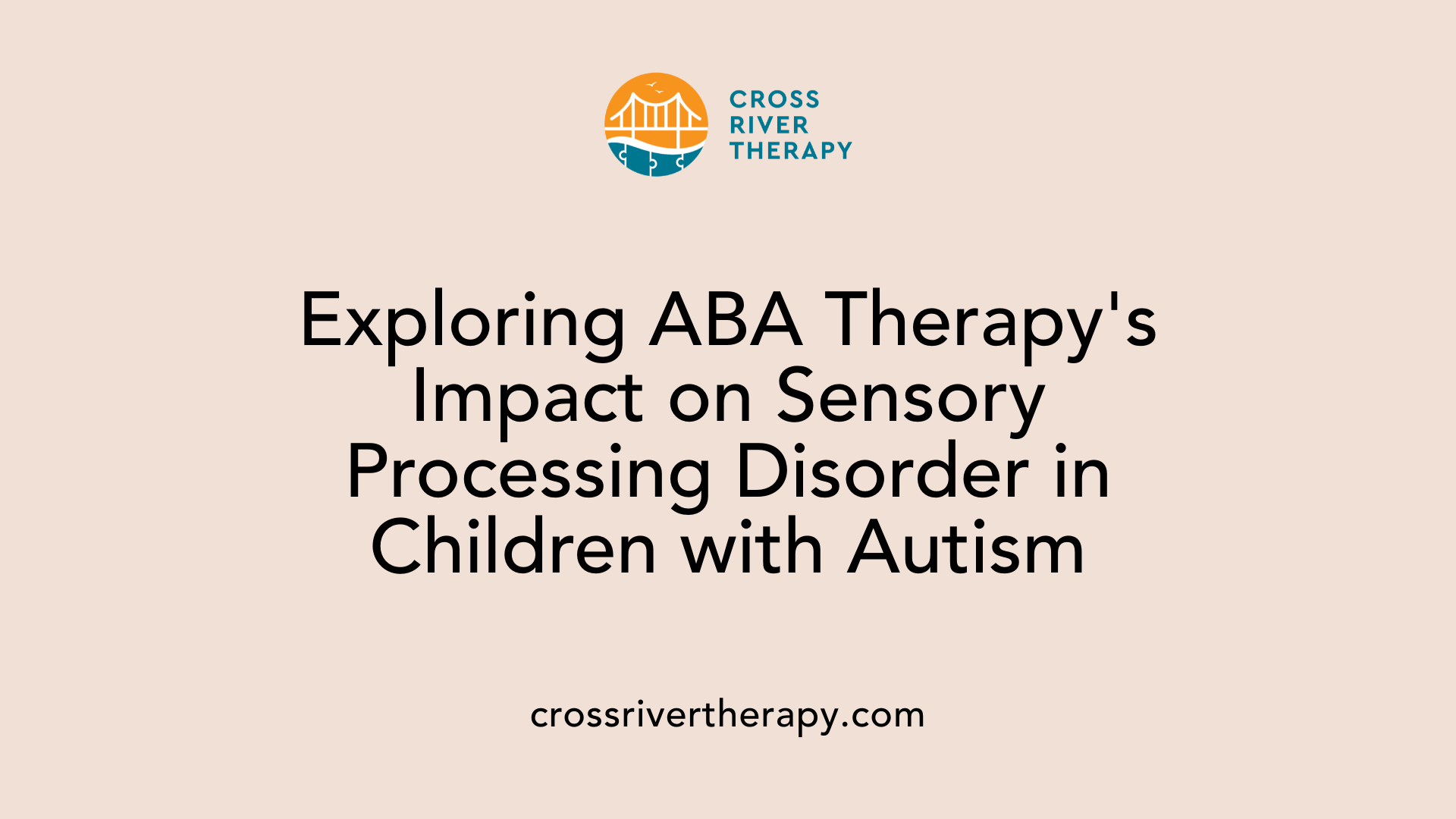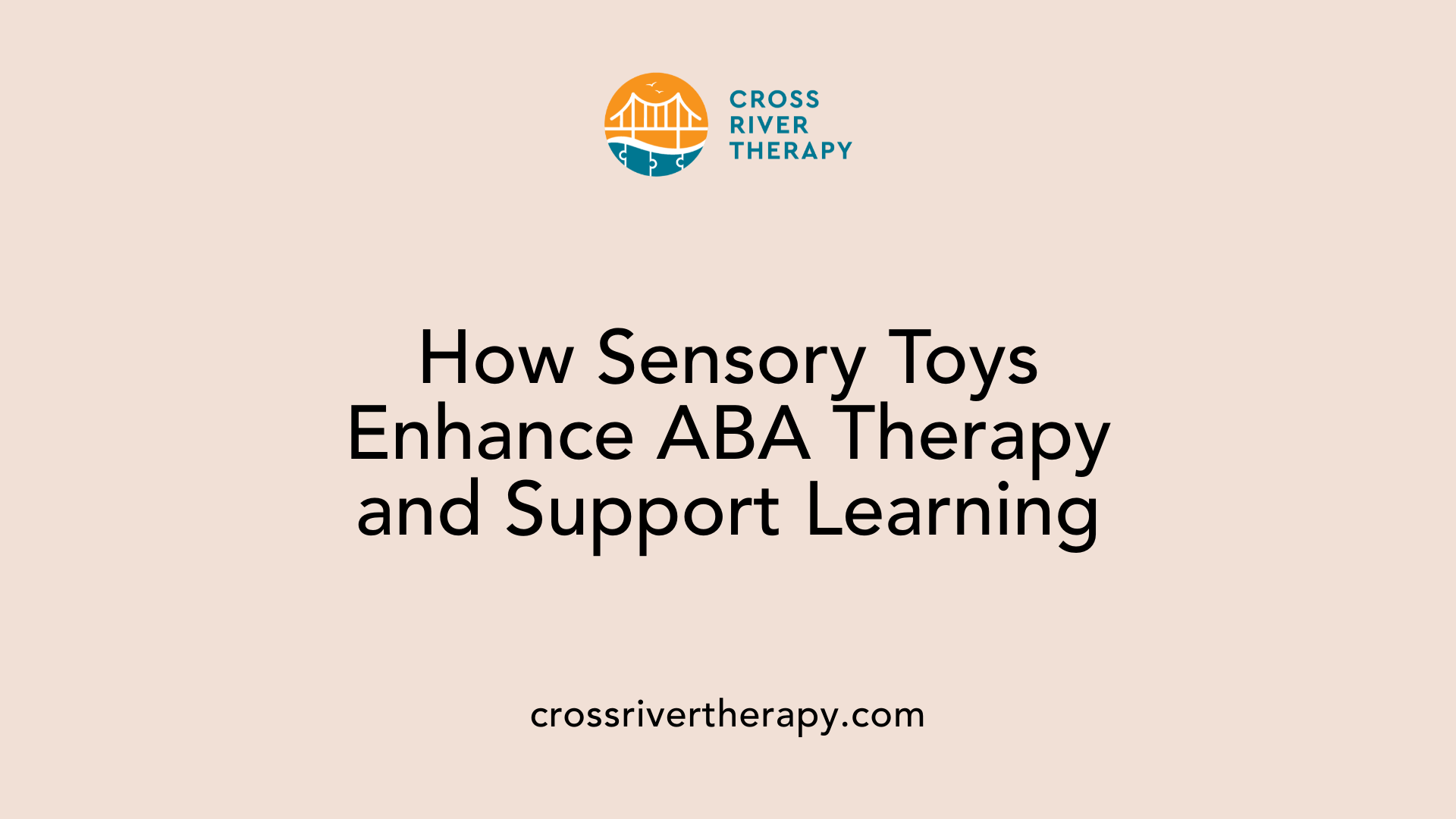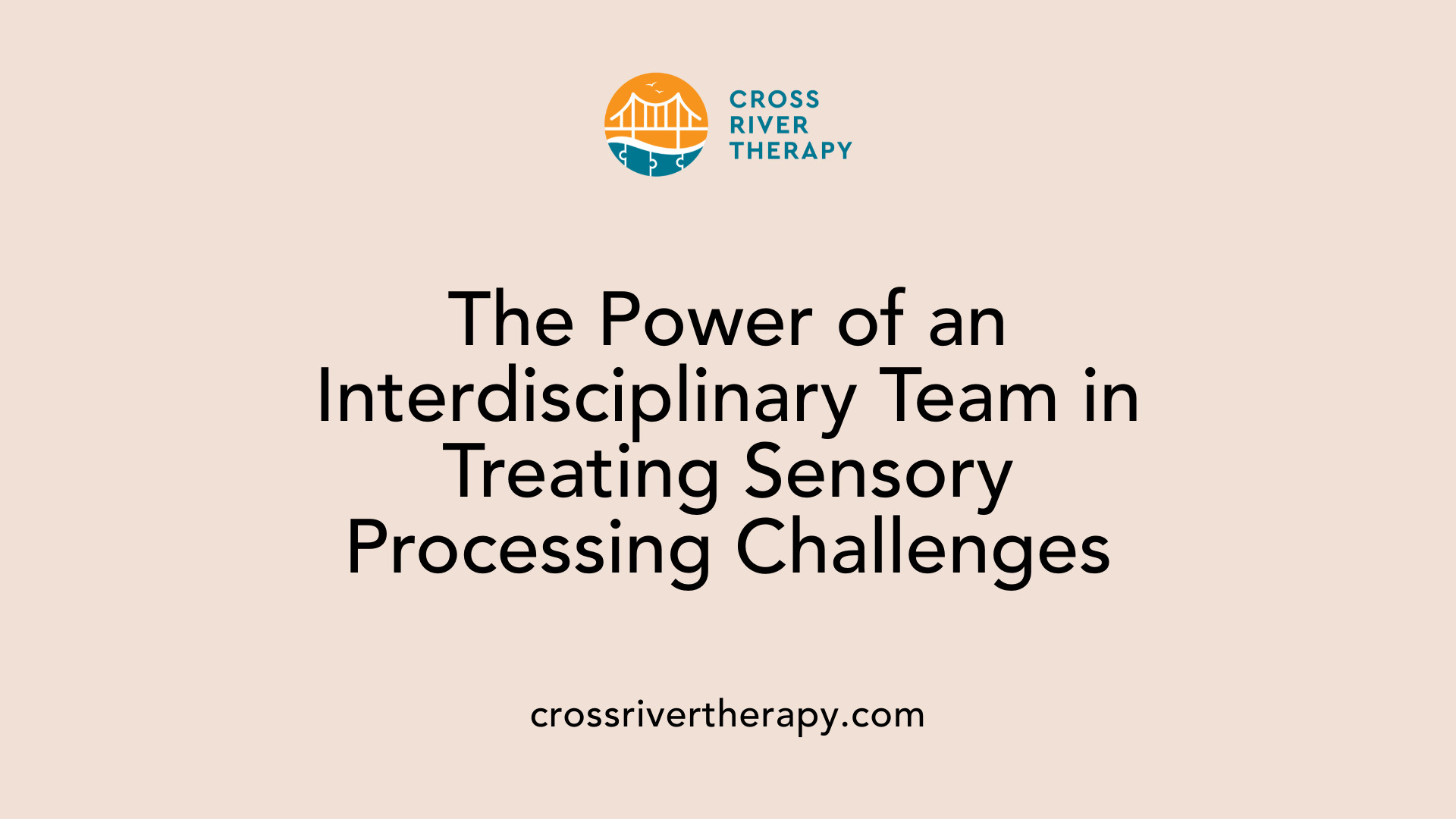How ABA Therapy Helps Children with Autism with Sensory Needs
Unlocking Potential: ABA Therapy for Sensory Challenges in Autism
Understanding ABA Therapy and Sensory Processing Disorder
Applied Behavior Analysis (ABA) therapy is a well-established method used to support children with autism, particularly those experiencing sensory processing challenges. Sensory Processing Disorder (SPD) can significantly impact how individuals interact with their environment. ABA offers tailored interventions that address the unique sensory needs of each child, enhancing their ability to cope with sensory stimuli and improving overall functioning.
The Role of ABA in Managing Sensory Processing Disorder

What is the role of Applied Behavior Analysis (ABA) therapy in managing sensory processing disorder (SPD) in children with autism?
Applied Behavior Analysis (ABA) therapy plays a vital role in managing sensory processing disorder (SPD) in children with autism by integrating strategies that enhance sensory integration. It involves a systematic approach to identify specific sensory challenges each child faces in their daily lives.
ABA therapists implement techniques like sensory diets that include structured activities designed to expose children to a variety of sensory inputs. Environmental modifications, such as creating sensory-friendly play areas or adjusting classroom lighting, can significantly improve energy levels and focus. Additionally, self-regulation strategies, including the use of calming tools like noise-canceling headphones, help children manage anxiety related to sensory overload.
How do ABA strategies aid in sensory integration?
- Desensitization Techniques: Gradual exposure to challenging sensory stimuli, using positive reinforcement to encourage tolerance.
- Self-Calming Techniques: Incorporating strategies like stimming to help children cope with sensory input effectively.
- Behavior Modification: Teaching replacement behaviors that allow children to safely meet their sensory needs, turning unwanted responses into constructive actions.
What is the importance of collaboration with other therapy professionals?
Collaboration with other therapy professionals, such as occupational therapists and speech-language pathologists, is essential for a comprehensive approach to SPD. By working together, these therapists can share insights and create holistic treatment plans tailored to each child’s unique challenges. Having a multidisciplinary team allows for a combination of sensory-rich activities that address various needs, enhancing the effectiveness of ABA therapy.
What are the benefits of ABA for sensory processing issues?
- Improved Attention and Focus: Many parents report enhanced attention spans during therapy sessions due to structured sensory activities.
- Enhanced Social Skills: Engaging in social interactions through play and sensory activities promotes essential communication skills in group settings.
- Reduction of Meltdowns: With effective coping strategies, children experience fewer emotional outbursts related to sensory overload.
- Increased Independence: Children learn to manage their sensory challenges, leading to improved self-regulation and confidence in social situations.
This comprehensive, integrated approach has been shown to significantly enhance the quality of life for children with autism and sensory processing issues.
Addressing Sensory Challenges with ABA Techniques
How does ABA therapy address sensory-related challenges in autistic children?
ABA therapy addresses sensory-related challenges in autistic children through a structured and empathetic approach. It starts by identifying specific sensory sensitivities using Functional Behavior Assessments (FBAs). This thorough evaluation allows therapists to pinpoint triggers and understand how sensory overload affects the child's behavior.
Once sensitivities are recognized, therapists can implement systematic desensitization. This technique involves gradually introducing the child to sensory stimuli in a controlled manner. For example, if a child is sensitive to loud sounds, they might start with lower volume sounds, using positive reinforcement to celebrate their progress in tolerance. Over time, this gradual exposure helps the child build resilience to sensory inputs that once felt overwhelming.
Another critical component of ABA therapy is the teaching of replacement behaviors and self-regulation skills. Instead of responding to sensory overload with distress, children learn constructive alternatives. For instance, they may be encouraged to use tools such as stress balls, noise-canceling headphones, or engage in deep breathing exercises during overwhelming situations. This enables them to manage their sensory needs proactively.
Further enhancing the effectiveness of these strategies is collaboration with other professionals, like occupational therapists. This multidisciplinary approach brings additional sensory tools and techniques tailored to each child's unique requirements. By integrating these methods, children gain enhanced coping mechanisms, improving their ability to navigate sensory challenges both in therapy sessions and daily life.
Ultimately, ABA therapy not only helps in managing sensory challenges but also promotes a better understanding of personal needs, enhancing communication and social interaction skills. This holistic focus is crucial in improving the quality of life for children with autism, facilitating their successful engagement in learning environments.
Improving Daily Life Through ABA Therapy
How can ABA therapy improve functioning and daily situations for children with sensory sensitivities?
ABA therapy can significantly enhance the daily functioning of children with sensory sensitivities. Therapists utilize Functional Behavior Assessments (FBAs) to pinpoint specific triggers for each child, allowing for the development of individualized strategies. These strategies often include creating sensory-friendly environments and implementing sensory breaks that enable children to cope more effectively with stimuli.
The incorporation of sensory play into ABA sessions plays a vital role in improving motor skills and communication abilities. Activities designed to enhance sensory integration not only encourage interaction but also aid in emotional regulation. For instance, using sensory toys or tools during therapy can help children manage sensory overload in a constructive and enjoyable manner.
Collaboration with caregivers
The success of ABA therapy is amplified through continuous collaboration with caregivers. Regular communication ensures that caregivers can reinforce strategies learned during therapy at home. This alignment is essential, as it allows children to consistently practice the skills necessary for navigating their sensory challenges in different settings, whether at school or in social situations.
Caregivers are often trained in implementing techniques like self-calming strategies and sensory accommodations, creating an environment that supports the child’s needs effectively.
Impact on independence and quality of life
ABA therapy fosters independence as children learn to articulate their sensory preferences and cope with overstimulation. Techniques such as deep breathing and the use of noise-canceling headphones give them tools to manage sensory overload. This development leads to better focus, improved social interactions, and reduced anxiety.
The overall quality of life for these children improves as they learn essential life skills. They become more adept at self-regulation, promote effective communication, and enjoy greater participation in everyday activities, thus enhancing their emotional and social well-being.
| Area of Focus | ABA Strategies | Expected Outcomes |
|---|---|---|
| Sensory Sensitivities | Personalized sensory-friendly strategies | Improved regulation and coping skills |
| Caregiver Collaboration | Consistent reinforcement of therapy strategies | Better application of skills in daily life |
| Independence and Quality of Life | Use of self-regulation tools | Enhanced focus, social interaction, and overall well-being |
Tailoring ABA Interventions for Sensory Needs
How do ABA professionals approach and tailor interventions for sensory issues in autism?
ABA professionals recognize that children with autism can have unique sensory profiles, leading to both hypersensitivity and hyposensitivity to stimuli. To effectively address these sensory-related challenges, practitioners start by conducting comprehensive assessments to evaluate an individual’s sensory preferences and triggers. This tailored assessment helps identify specific sensory needs, laying the groundwork for targeted intervention strategies.
Sensory integration strategies and coping skills
Once sensory needs are identified, ABA professionals implement a variety of strategies to support sensory integration:
- Sensory diets: Structured activities that help regulate sensory input throughout the day.
- Desensitization techniques: Gradual exposure to overstimulating environments to improve tolerance.
- Coping skills training: Teaching techniques like deep breathing, using sensory breaks and effective communication strategies to manage sensory overload.
Consistency of support across environments
Collaboration between ABA practitioners, caregivers, and other professionals is crucial. This teamwork ensures that interventions are consistently applied across different environments, such as home, school, and therapy sessions. By maintaining open communication, parents and therapists can adapt strategies as needed, providing children with continuous support. The integration of sensory tools, such as noise-canceling headphones or fidget toys, further enhances these strategies, helping children better navigate their sensory experiences.
Overall, ABA therapy aims to improve emotional self-regulation and communication regarding sensory needs, significantly enhancing the quality of life for children with autism.
Integration of Sensory Activities in ABA
What sensory activities are integrated into ABA therapy to support sensory regulation and development?
Sensory activities are crucial in ABA therapy, particularly for children with autism spectrum disorder (ASD). They include a variety of methods designed to engage and stimulate the five senses, promoting sensory regulation and enhancing developmental skills. Common activities include:
- Sensory Walks: These offer tactile experiences by encouraging children to walk on different surfaces, helping them become aware of their surroundings.
- Sensory Bins: Filled with various materials (sand, water beads, rice), these bins allow children to explore textures, enhancing tactile and motor skills.
- Calming Techniques: Using deep pressure or soothing music, children learn self-regulation and coping strategies.
Benefits for skill development
Engaging in sensory activities fosters important developmental skills. Children not only work on fine and gross motor abilities but also develop communication and social interactions.
These activities provide:
- Improved motor skills through hands-on experiences.
- Enhanced communication skills, as children learn to express needs and feelings related to their sensory experiences.
- Opportunities for social interactions, especially in group settings, promoting essential social skills in a low-pressure environment.
Tailoring activities to child preferences
The effectiveness of sensory activities is greatly increased when they are tailored to individual preferences and needs. By incorporating a child’s interests, therapists can make activities more engaging and motivating. For instance, a child who enjoys animals might respond better to a sensory bin filled with animal figurines and sand. This personalization supports meaningful learning and helps children retrain their brains to respond positively to various sensory stimuli.
In summary, the integration of sensory activities within ABA therapy not only enhances children's developmental abilities but also provides them with essential tools for emotional regulation and coping with their sensory challenges.
Benefits of Sensory Toys in ABA Therapy

Types of sensory toys
Sensory toys play a vital role in supporting children with autism, helping them manage their sensory needs effectively. These toys come in various forms, catering to different sensory experiences:
| Type of Sensory Toy | Sensory Experience | Examples |
|---|---|---|
| Tactile | Touch and texture | Fidget spinners, textured balls |
| Auditory | Sound | Shaker toys, musical instruments |
| Visual | Sight | Light-up toys, colorful objects |
| Proprioceptive | Body awareness and movement | Weighted blankets, resistance bands |
| Vestibular | Balance and movement | Swings, balance boards |
| Oral | Taste and oral exploration | Chewy toys, edible sensory items |
Role in behavior modification and focus
Sensory toys can significantly influence behavior modification and attention in children undergoing ABA therapy. When children engage with these toys, they can increase their focus during sessions and reduce anxiety. For example:
- Allowing children to use calming sensory toys like weighted blankets can help them feel secure.
- These toys can also reinforce positive behavior by serving as rewards following task completion, thus encouraging desired behaviors.
Use in therapy and home environments
Incorporating sensory toys into both therapy and home settings can create a supportive environment for children with sensory processing issues. By using sensory toys in practice:
- Therapists can teach coping skills by introducing toys that promote relaxation and emotional regulation, making therapy sessions more effective.
- At home, sensory toys allow parents to reinforce therapy lessons, creating opportunities for structured play that aligns with therapeutic goals.
Through the effective use of sensory toys, children can enhance their focus, improve self-regulation, and develop essential skills necessary for social interaction and daily living.
Fostering Social Interaction and Communication

Impact of sensory activities on social skills
Sensory activities provide a unique platform for children with autism to engage in social interaction. These fun and often collaborative experiences create opportunities for children to develop essential social skills. Low-pressure environments foster communication and allow them to practice sharing, turn-taking, and collaboration, making socializing enjoyable and approachable.
Role-playing and facial expressions
Incorporating role-playing into therapy is instrumental in enhancing children's understanding of social cues. Through these activities, children learn to read and interpret facial expressions, which are essential for effective communication. By acting out various social scenarios, children practice responding to different emotional contexts, which can translate into better interaction skills in real-life situations.
Communication tools in ABA
ABA therapy utilizes various communication tools to help children articulate their needs effectively. Visual supports such as picture schedules or visual prompts can bolster a child's language skills. Additionally, alternative communication methods like sign language may be integrated, ensuring children can express themselves even when verbal communication poses challenges. By reinforcing these communication techniques, the therapy promotes clearer expression and understanding in social contexts.
| Aspect | Strategy | Purpose |
|---|---|---|
| Sensory Activities | Engaging group play | To enhance social skills through collaborative experiences |
| Role-playing | Practicing social scenarios | To improve comprehension of social cues and emotional responses |
| Communication Tools | Visual supports and sign language | To facilitate expression of needs and enhance language skills |
Collaborative Approach to Comprehensive Care

Importance of interdisciplinary collaboration
Collaborative care is essential for effectively managing Sensory Processing Disorder (SPD), especially in children with autism. An integrated approach that includes professionals from Applied Behavior Analysis (ABA), occupational therapy, and speech-language pathology ensures comprehensive support. By sharing expertise, these professionals can develop tailored interventions that address each child’s unique sensory needs, leading to better therapeutic outcomes.
Working with schools and families
Collaboration extends into the educational setting, where teachers and therapists join forces to create sensory-friendly environments. Accommodations such as noise reduction or sensory breaks are vital in helping children achieve their best performance in school. Open lines of communication among families, schools, and therapy providers ensure that strategies are reinforced at home and in academic settings, crucial for fostering consistency in interventions.
ABA's impact on long-term development
The structured nature of ABA therapy supports long-term developmental goals for children with autism. By teaching self-regulation and coping skills, ABA promotes better emotional control and social interaction. Research shows that intensive and consistent ABA can enhance communication and academic skills, equipping children for success as they transition through various life stages.
| Collaboration Aspect | Benefits | Examples |
|---|---|---|
| Interdisciplinary Team | Comprehensive care tailored to needs | Combined therapy strategies |
| School-Home Communication | Consistency in interventions | Shared strategies for classroom |
| ABA Therapy | Long-term development improvements | Social skills and self-regulation |
The Transformative Impact of ABA on Children with Autism
ABA therapy provides a transformative approach for children with autism experiencing sensory challenges. By implementing tailored strategies, addressing individual sensory profiles, and incorporating sensory activities and tools, ABA therapy fosters development in crucial skill areas such as communication, social interaction, and self-regulation. Collaboration among ABA practitioners and other professionals ensures that interventions are comprehensive and tailored to each child's unique needs, ultimately enhancing the quality of life for children and their families. As ABA therapy continues to evolve, its role in supporting children with autism and sensory processing issues becomes increasingly vital.
References
- Can ABA be used for SPD? - Special Learning
- Sensory Issues - Autism Speaks
- ABA and School Readiness for Children with Sensory Processing ...
- Can ABA Help with Sensory Issues in Autism? | Connect n Care
- The Role of Sensory Toys in ABA Therapy for Children with Autism
- 6 Benefits of Sensory Activities for Children with Autism
- Sensory Issues and Autism: 10 Ways ABA Therapy Can Help!
- Applied Behavior Analysis (ABA) | Autism Speaks



